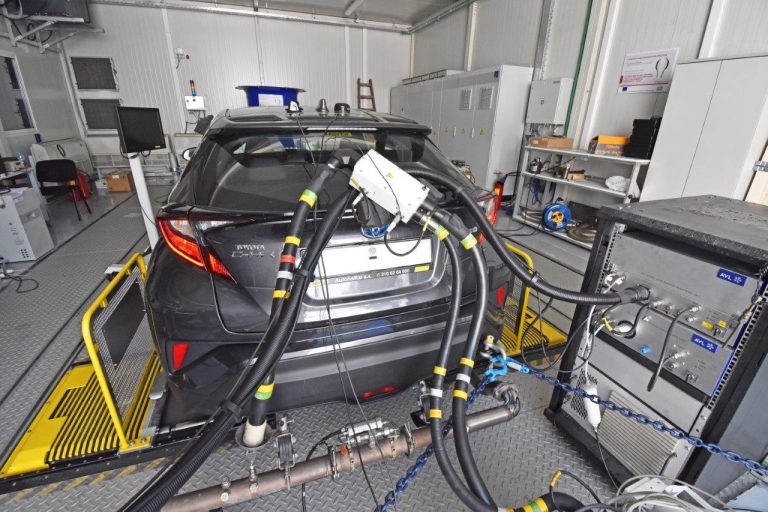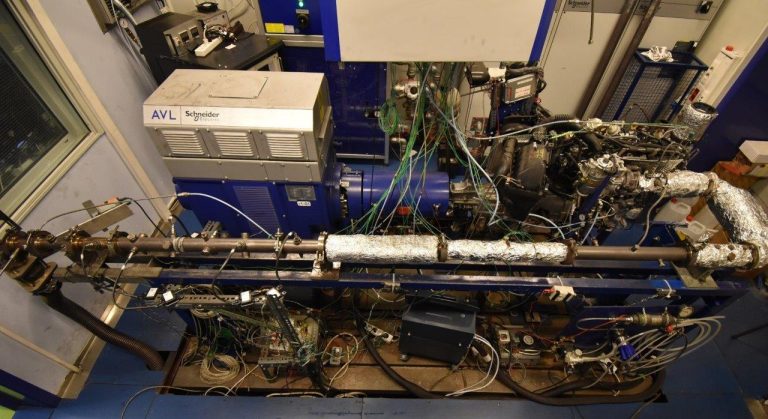Ever wonder what kind of impact our vehicles have on the environment? Everything from the energy they consume, to the pollutants they leave behind…
The Laboratory of Applied Thermodynamics (LAT) at Aristotle University of Thessaloniki (AUTh) wonders about that too. As part of the Department of Mechanical Engineering, LAT focuses on the environmental impacts of transport, pollutant emissions from engines, vehicles and vessels, and new technologies in electrified powertrains as well as in alternative fuels. And over the years, LAT has been partnering with both the automotive industry and the European Commission to tackle these questions with cutting-edge research.
But just how does a busy mechanical engineering lab keep track of all the equipment, personnel, test sites, and research projects? We sat down and had a chat with Dr. Dimitris Katsaounis, Technical manager at LAT/AUTh – to see how they’ve leveraged Ganttic’s resource management software to enhance efficiency and streamline operations in their lab.
Background of the Laboratory of Applied Thermodynamics (LAT)
Thessaloniki’s Aristotle University is the largest and most prestigious university in Greece. Hosting hundreds of research facilities, the Laboratory of Applied Thermodynamics (LAT) was established in 1975.
Over the decades, they have put their expertise, state-of-the art facilities, experimental equipment and simulation tools to good use, by preparing high quality studies for academia, industry, and EU authorities.
This means, in order to do their work, they require starting their day with a clear plan.
“As we had a lot of equipment being moved from one testing site to another, it was necessary to have a detailed plan of what will be used and where it will be used.”
Their busy lab included facilities and equipment like chassis dynamometers, engine dynamometers, exhaust analyzers, particle measurement instruments, PEMS units, and power analyzers. Then add to the mix, 60 team members, including professors, senior researchers, engineers, technicians, and administrative staff, LAT required a planning tool that accommodated both people and equipment scheduling.
However the tool they were then using, wasn’t meeting their needs.
“We were using another tool that covered most of our requirements but was difficult to use, and was especially time consuming to make changes in the schedule. In addition, the company was acquired by another one, so the upgrades and support became non-existent. It was then, we decided to switch to another tool.”
Planning Challenges in the Lab

Adding to their software challenges, LAT encountered another problem. They were growing.
As LAT’s operations expanded, managing the increasing number of employees and sophisticated equipment was becoming more difficult. The lab required a robust tool to efficiently plan and allocate resources for various testing activities.
As Dimitris explained:
“The same information was required for the allocation of engineers and technicians. We had to know who will be working in each test bench, who will be driving the test vehicle, and who will be supporting the installation or maintenance of the equipment.”
Moreover, they needed alerts if it so happened that equipment and facilities were double booked.
“For example, it was important to know if the planner had allocated the same instrument to be in two different testing sites at the same time. As we want to avoid this, the planner should alert us. That way, we can adjust the planning so that the daily utilization of equipment does not exceed 100%.”
So when the time came to switch planning tools they were on the lookout for something that could effectively:
- Coordinate the use of equipment across multiple testing sites
- Provided detailed daily planning for equipment and personnel
- Helped them to avoid overbooking and scheduling conflicts
- Ensured accessibility for all team members through a web-based platform
Choosing Ganttic for Lab Management
LAT discovered Ganttic while on the hunt for a lab resource management tool that could replace their existing, cumbersome system.
“We came across Ganttic while searching the web for a new tool to replace the previous one we used. After comparing the capabilities offered by various platforms and the pricing, we went with Ganttic.”
The online resource planning tool checked all the boxes for the lab supervisors and technicians by providing:
- A user-friendly interface
- Comprehensive scheduling and conflict-checking features
- Web accessibility and mobile app support
- Excellent customer support
And as such they’ve been using it for the past 2 years. With Dimitris adding:
“The first and most important advantage is that it is a very simple and direct way of showing the plan as a Gantt chart. Changes to the plan can be made quickly and are easy to implement.”
Implementation and Workflow

Since adopting Ganttic, LAT has integrated it into their daily operations with 40-50 active users.
This workflow involves:
1. Project Creation
“It is very easy to present the plan on a day by day, weekly or monthly basis.”
When a new project starts, they create the project and its tasks in Ganttic. This works for both long-term and short-term projects.
2. Resource Allocation
Once the project tasks are defined, they are placed on the Gantt chart. From there resources are assigned to each task.
3. Checking for Conflicts
Next, they check for conflicts by looking at the colored utilization bar which is automatically shown over the tasks. The conflicts are also double-checked in a resource report.
“A great and very useful feature is the utilization bar charts showing the planned usage percentage for each resource. This is also useful for people. Because for example, a test engineer can work only in one place at a time, and it prevents assigning someone with more work than he is able to perform.”
4. Discussion and Collaboration
If it seems that changes are necessary, the team will have a discussion amongst the project managers.
“It is very common to have a Teams meeting where the planner is sharing the screen showing the resources reports which is the most helpful and commonly used feature.”
5. Sharing the Plan
“Web accessibility allows everyone to check the plan quickly and easily and does not require any software installation.”
At last the finalized plan is shared. While Ganttic is only used internally, the plan can be transferred to a simple Gantt chart which is shown to the customer. Sharing is made even easier, since the web-based software has unlimited users:
All in all this workflow has helped them plan more efficiently and save time in the process. With Dimitris adding:
“In this way we plan ahead with the schedule of resources, avoid conflicts and arguments between colleagues or deays that obviously cause problems to the project managers. It certainly saves us from a lot of email messages and phone calls.”
What’s Next For LAT

Ganttic has proven to be an invaluable tool for the team at the Laboratory of Applied Thermodynamics. And with their resource planning needs accounted for, they can work on fostering partnerships and delivering top-notch research.
Lately, Dr. Katsaounis as well as a team of professors, researchers, engineers and students from different Greek universities have joined forces to more thoroughly study the environmental impact of vehicles. This collaboration is called FuVEP (future vehicle environmental performance) and has been focusing on testing, simulation, research, training, and consultancy. Serving clients from the automotive industry, vehicle component manufacturers, aftertreatment systems producers, fuel and lubricant industries, and the European Union.
As LAT and its partnerships continue to grow and innovate, Ganttic will be there to enhance their engineering resource management capabilities, while supporting their cutting-edge research. Ensuring that they can meet the complex demands of modern energy and environmental research.